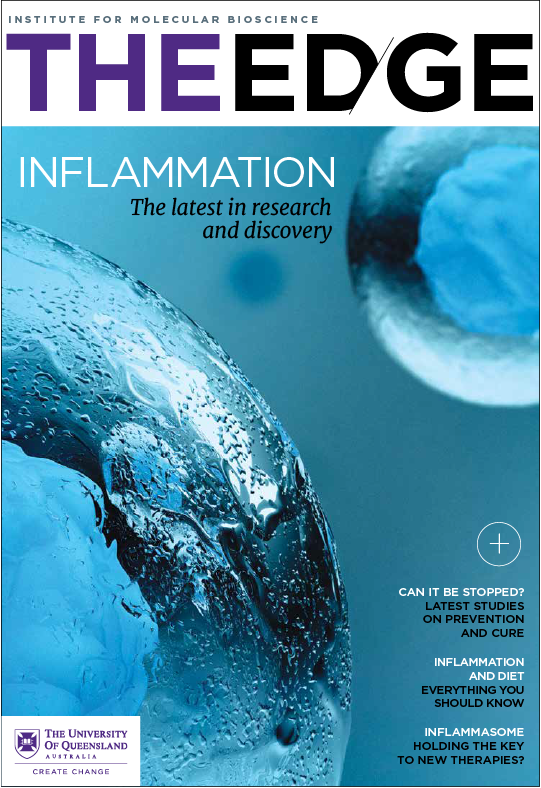Cutting off the power to slow things down
Could macrophages’ unique metabolism be the key to disrupting inflammation?

Could we turn the immune system’s own power plant against it to control out-of-control inflammation? Professor Matt Sweet thinks so.
The IMB Group Leader specialises in the study of innate immune cells – the first responders to environmental threats – and much of his work involves macrophages, the cells that protect the body by engulfing dangerous intruders such as bacteria.
Macrophages identify these intruders and set the inflammatory response in action by releasing cytokines – proteins that activate other immune cells.
“But in order for the macrophages to do so, they need to reprogram their metabolic pathways,” says Professor Sweet.
Macrophages need energy, as do all cells. The traditional powerhouses in the cell are mitochondria, which break down nutrients to create the energy-rich molecule adenosine triphosphate (ATP).

Macrophages engulfing yeast.
Macrophages engulfing yeast.
“Mitochondria are very good at making ATP,” says Professor Sweet. “But it’s a relatively slow process, which is fine if the macrophage is just hanging out in the tissue, helping to make sure everything runs smoothly.”
When danger appears, however, macrophages need to swing rapidly into action, resulting in sudden huge energy demands.
“Macrophages need to manufacture a whole lot of molecules really quickly,” says Professor Sweet. “So there is another metabolic pathway, glycolysis, that is much less efficient at making ATP than mitochondria, but much faster.”
And so as the macrophage responds to its changing environment, it makes a sudden switch, reprogramming its metabolism to turn on glycolysis, the process that breaks down glucose to generate energy.
That led Professor Sweet to wonder if we could use this unique process to close down the macrophage power supply and so disrupt, or even stop, the inflammatory response.
“If we can turn off or dim the switch, it will enable us to shut down inflammation when it goes awry,” he says.
Professor Sweet and his team have already identified a key element that controls the switch for power production.
“The enzyme represents a potential target by which we may be able to block inflammation by reprogramming immune cell metabolism,” he says.
For more information on inflammation research read Professor Sweet's research profile and Centre for Inflammation and Disease Research page.
"If we can turn off or dim the switch, it will enable us to shut down inflammation when it goes awry."
Professor Matt Sweet



